Attention! Door upholstery may vary depending on trim level. Therefore, the process of removing the upholstery may differ from that stated.
Attention! The steps for removing the upholstery of the front and rear doors are identical.
Removing
1. Lower the door glass more than half way.
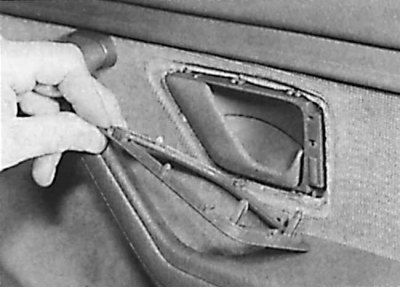
2. With a screwdriver (to extract a special protrusion) remove the door handle cover.
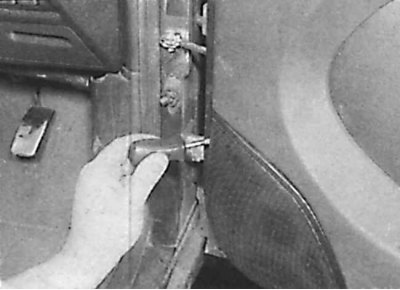
3. On vehicles equipped with built-in speakers, unscrew the speaker grill screws or remove the mounting brackets, turn off, and then remove the speaker.
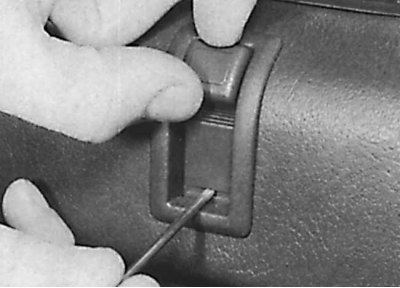
4. Remove the door lock button by pulling it up while depressing the latch with a screwdriver.
5. On models with a manual window regulator, remove its handle from the shaft and the gasket.
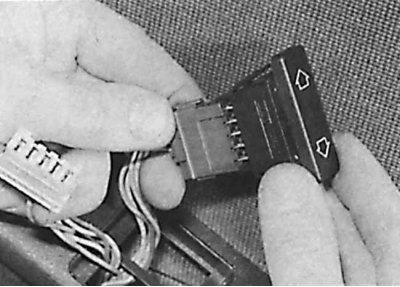
6. On versions with electric windows, disconnect the battery, then use a screwdriver to remove the switch from the door and disconnect the connector.
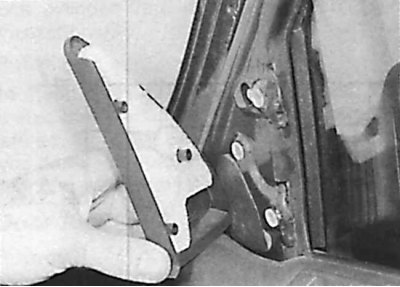
7. Remove the exterior mirror trim.
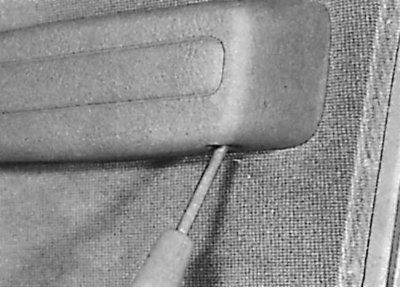
8. Unscrew the three screws securing the armrest and remove the armrest.
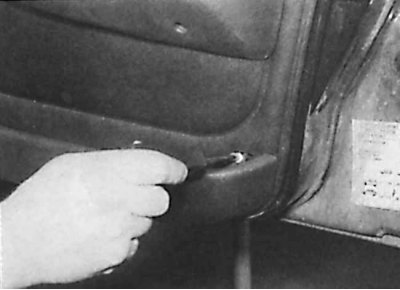
9. On later models, use a lever to remove the trim plate from the rear of the door pocket and unscrew the screw securing the rear of the door trim.
10. Where applicable, use a screwdriver to remove the upholstery retaining clips located in the loudspeaker socket.
11. Using a flat fork-shaped tool, unhook the door upholstery so as not to damage the plastic latches. If the latches are damaged, do not glue them, but install them in the inner reinforcement of the door trim.
12. Lift the upholstery and remove it from the door.
Installation
1. Glue plastic tape on the openings of the door frame to protect against corrosion and to prevent water from entering the interior.
2. Install all latches in the appropriate holes in the door and secure the door trim.
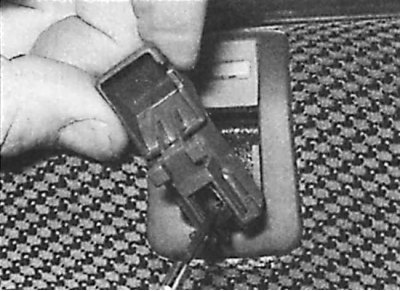 | 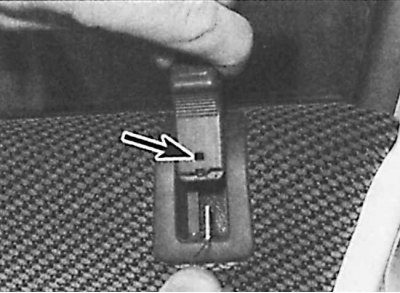 |
3. Install the button of the door blocking rod, for which place the rod in the lower of the two holes, push the button strongly onto the rod until it locks, and the fastening rod will appear in the upper hole.
4. Carry out the rest of the steps in reverse order with respect to the removal of the upholstery.
5. While driving, check if the door trim vibrates.
Attention! To protect the doors from corrosion, as well as to achieve a dull sound when they are closed, a special bituminous agent should be poured into the inner cavity of the door. This can only be done when the door frame is perfectly dry (without the slightest trace of moisture).
